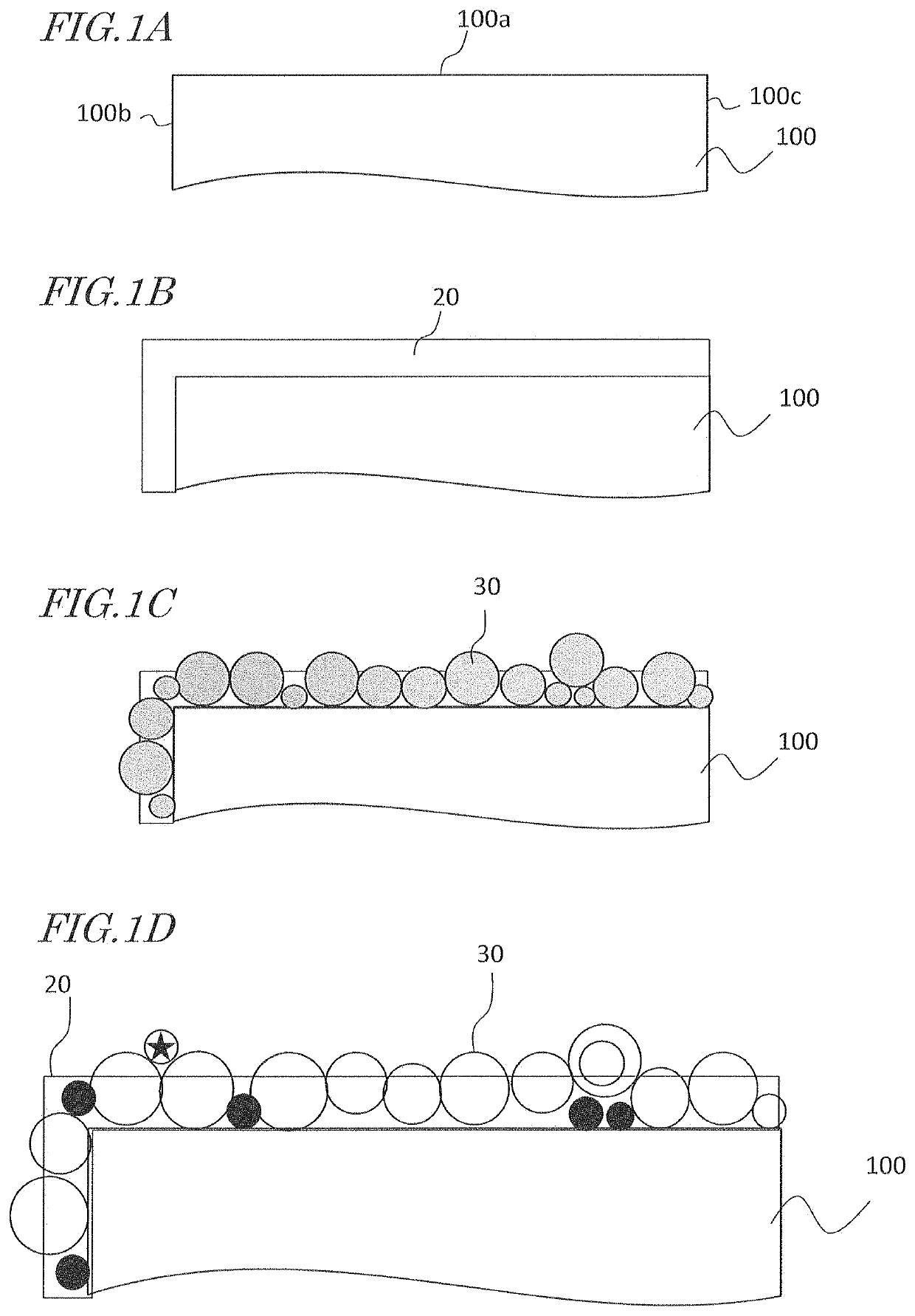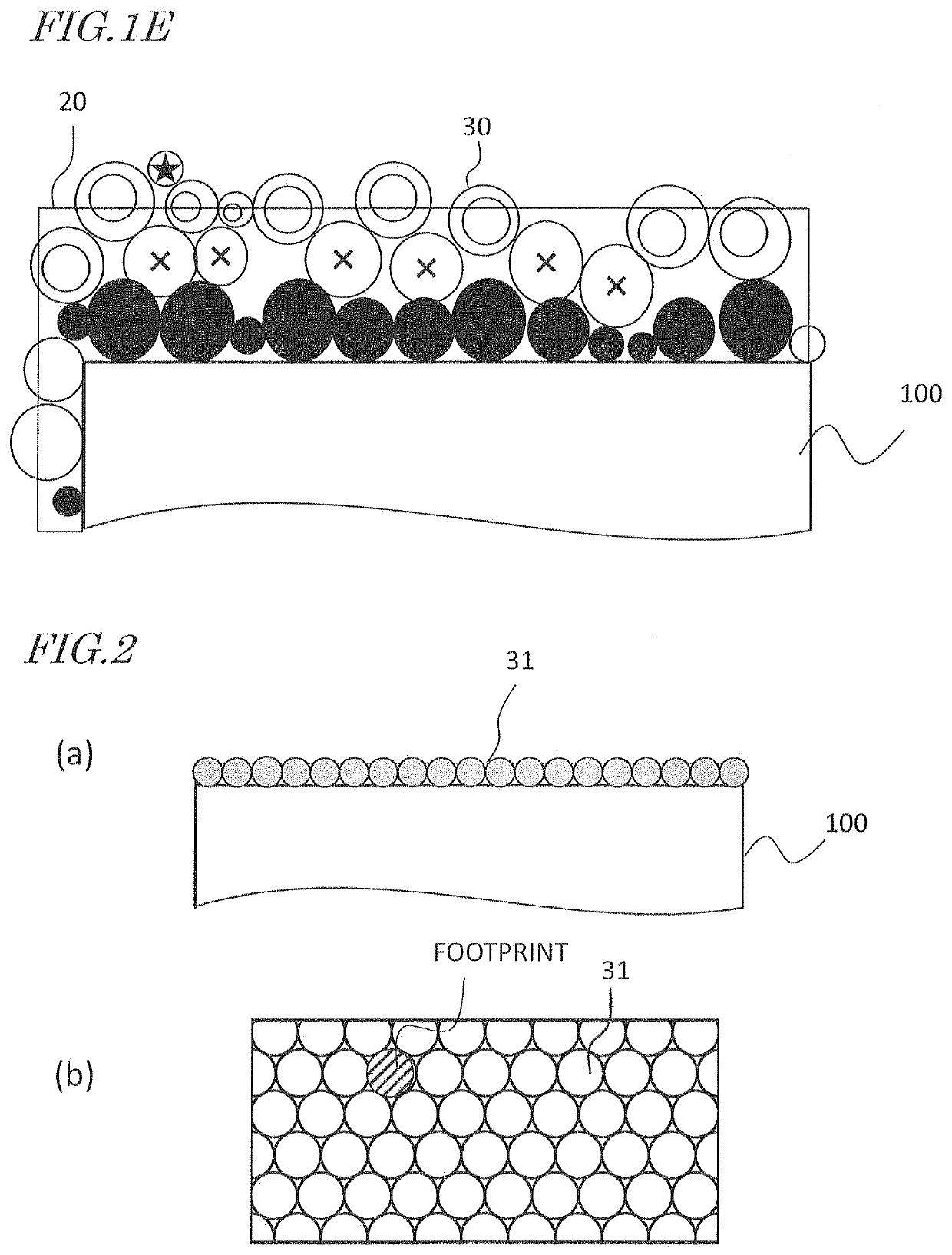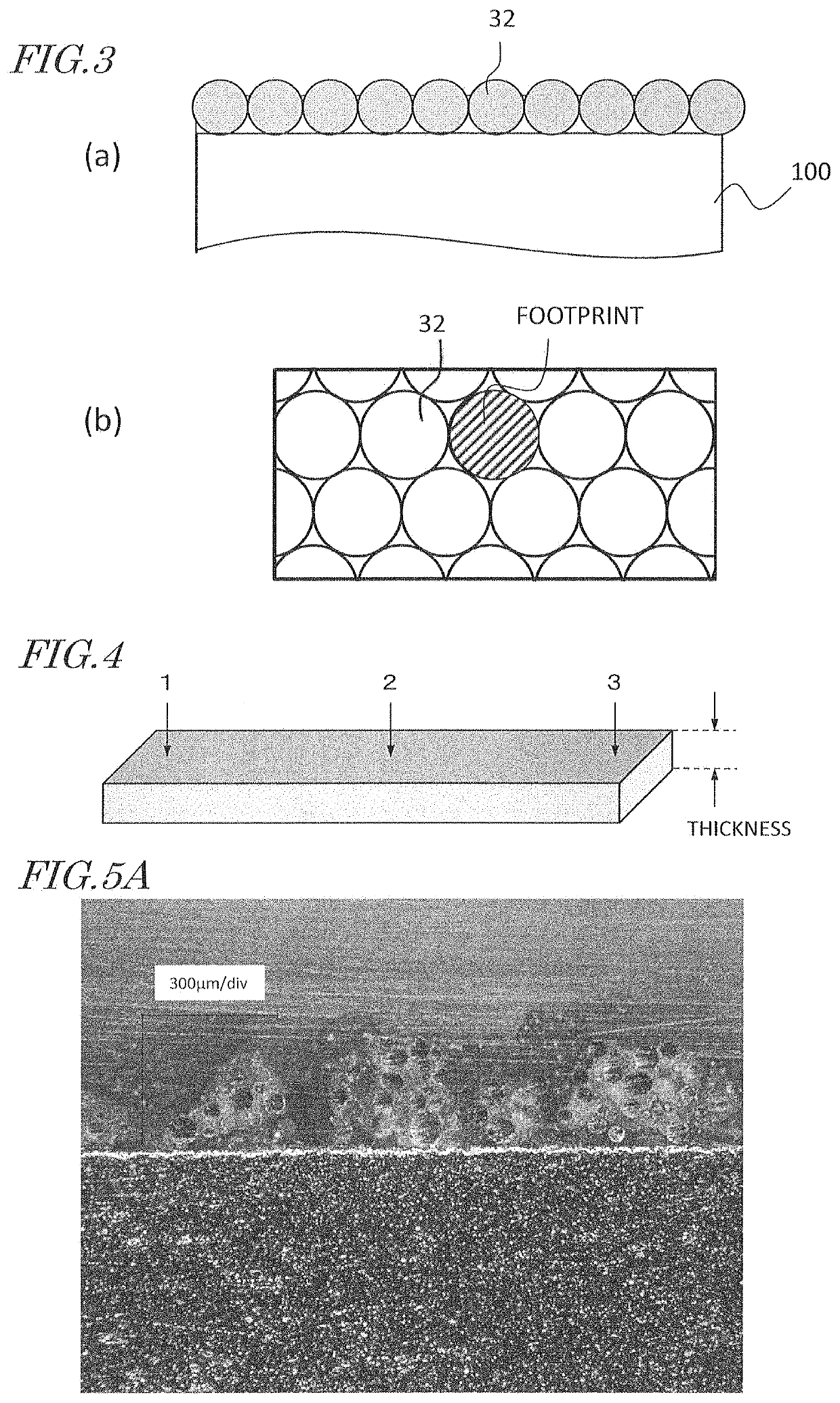Method of producing R-T-B sintered magnet
a technology of rtb and rtb, which is applied in the manufacture of magnetic materials, magnetic bodies, inductance/transformers/magnets, etc., can solve the problems of decreasing remanence and achieve the effect of reducing the amount of heavy rare earth elements rh and improving hcj
- Summary
- Abstract
- Description
- Claims
- Application Information
AI Technical Summary
Benefits of technology
Problems solved by technology
Method used
Image
Examples
experimental example 1
[0111]First, by a known method, a sintered R-T-B based magnet with the following mole fractions was produced: Nd=13.4, B=5.8, Al=0.5, Cu=0.1, Co=1.1, balance=Fe (at %). By machining this, a sintered R-T-B based magnet raw piece which was sized 4.9 mm thick×7.5 mm wide×40 mm long was obtained. Magnetic characteristics of the resultant sintered R-T-B based magnet raw piece were measured with a B-H tracer, which indicated an HcJ of 1035 kA / m and a Br of 1.45 T.
[0112]Next, a TbF3 powder and an NdCu powder were granulated with a binder to produce a particle size-adjusted powder. The TbF3 powder was a commercially available aspherical powder, with a particle size of 10 μm or less. The NdCu powder was a spherical powder of Nd70Cu30 alloy produced by a centrifugal atomization technique, having a particle size of 106 μm or less. PVA (polyvinyl alcohol) was used as the binder, and water was used as a solvent. A paste which was mixed so that TbF3 powder:NdCu powder:PVA:water=36:54:5:5 (mass ra...
experimental example 2
[0121]To each powder having a particle size of 150 to 300 μm used in Experimental Example 1, 10 mass % of a powder which was 150 μm or less, or 10 mass % of a powder which was greater than 300 μm, was mixed; by a method similar to that of Experimental Example 1, the particle size-adjusted powder was allowed to adhere to the surface of the sintered R-T-B based magnet raw piece. An adhered amount of Tb was calculated from the amount of particle size-adjusted powder that had adhered, which indicated that the adhered amount of Tb was in the range from 0.6 to 1.5 mass % for both cases. This indicates that mixing 10 mass % of a powder deviating from the desired particle size would not have any influence.
experimental example 3
[0122]Particle size-adjusted powders were produced by using diffusion sources shown in Table 3, PVA (polyvinyl alcohol) as a binder, and NMP (N-methyl-pyrrolidone) as a solvent. However, sample No. 10 was not subjected to granulation with the binder. The particle size-adjusted powders having been produced were allowed to adhere to the same sintered R-T-B based magnet raw piece as that of Experimental Example 1, under conditions shown in Table 3. These were observed and evaluated by a method similar to that of Experimental Example 1, which revealed that each particle size-adjusted powder had adhered uniformly in one layer to the sintered R-T-B based magnet raw piece, while leaving substantially no spaces.
[0123]Furthermore, these were subjected to a heat treatment according to the heat treatment temperatures and times shown in Table 3, thus allowing the elements in the diffusion source to diffuse into the sintered R-T-B based magnet raw piece. From a central portion of the sintered R-...
PUM
| Property | Measurement | Unit |
|---|---|---|
| thickness | aaaaa | aaaaa |
| thickness | aaaaa | aaaaa |
| particle size | aaaaa | aaaaa |
Abstract
Description
Claims
Application Information
 Login to View More
Login to View More - R&D
- Intellectual Property
- Life Sciences
- Materials
- Tech Scout
- Unparalleled Data Quality
- Higher Quality Content
- 60% Fewer Hallucinations
Browse by: Latest US Patents, China's latest patents, Technical Efficacy Thesaurus, Application Domain, Technology Topic, Popular Technical Reports.
© 2025 PatSnap. All rights reserved.Legal|Privacy policy|Modern Slavery Act Transparency Statement|Sitemap|About US| Contact US: help@patsnap.com



